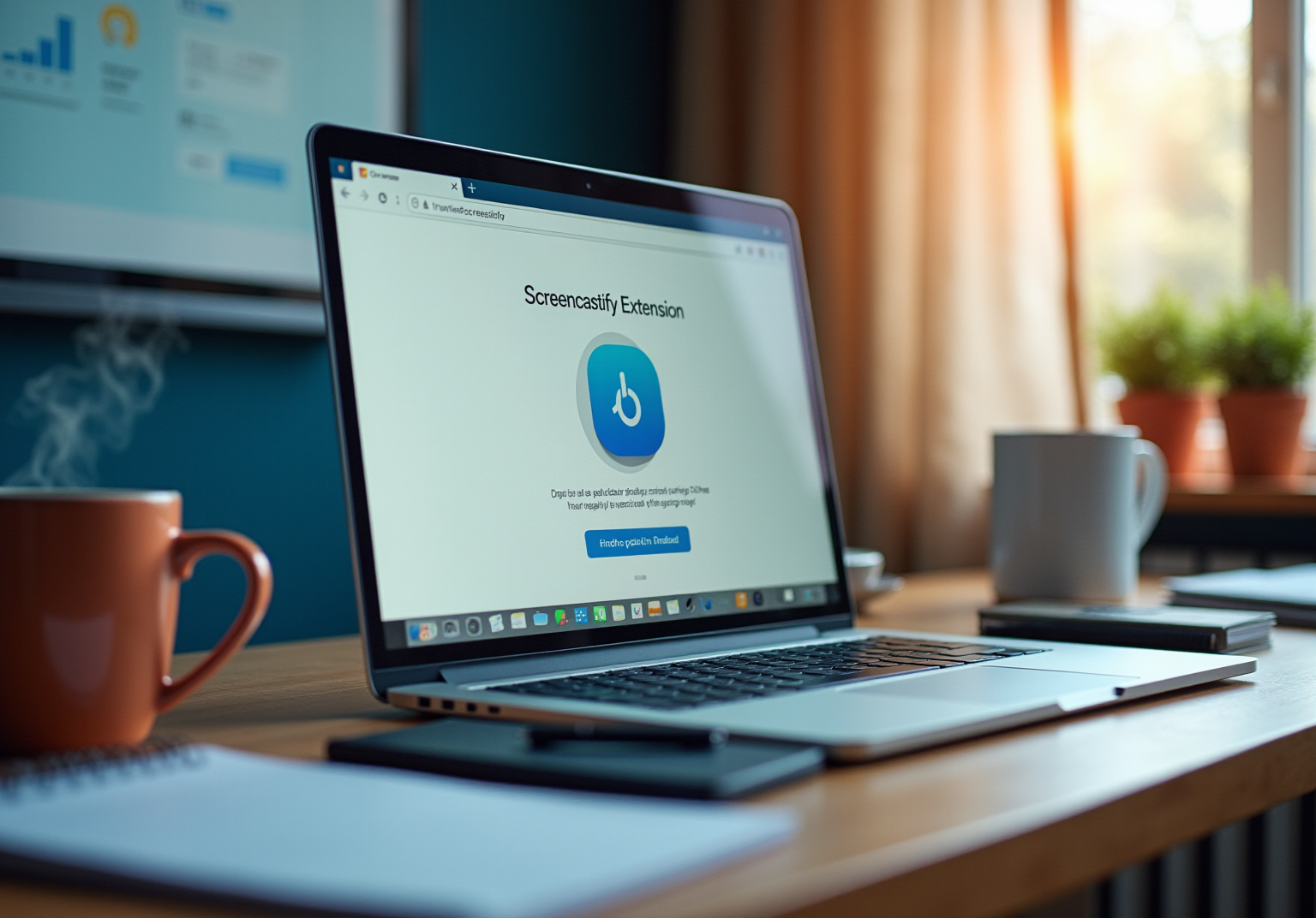
Process Improvement through Documentation
|
October 17, 2025
|
5 Steps to Document Procedures Effectively
Overview
You might be wondering how to make your procedure documentation more effective. Well, the article outlines five essential steps that can help you out:
- Defining the scope
- Creating structured documents
- Reviewing and testing procedures
- Keeping everything updated
These steps are super important for promoting standardization and boosting productivity. Plus, they ensure that your documentation stays relevant and accurate. The article really emphasizes the need for stakeholder engagement, organized presentation, and regular assessments to adapt to any changes that come your way. So, let’s dive into these steps and see how they can make your life easier!
Key Highlights:
- Process records capture detailed steps for executing tasks, standardising methods and preserving knowledge.
- Efficient documentation can save organisations up to 80% of time usually spent on manual file sharing.
- 70% of team members believe fewer meetings and emails would enhance productivity.
- Effective documentation promotes uniformity, transparency, and boosts productivity while reducing chaos.
- Defining the scope of procedures involves stakeholder engagement and gathering insights on inputs and outputs.
- Creating structured documents includes organised sections, clear headings, and the use of visuals to enhance understanding.
- Reviewing procedures involves distributing documents for feedback and conducting trial runs to identify inefficiencies.
- Regular maintenance and updates of documentation are essential for accuracy and relevance, especially after significant changes.
- Version control systems help track changes and ensure team members have access to the latest information.
Introduction
You might be wondering why effective process documentation is so important. Well, it’s not just a bureaucratic necessity; it’s actually a key ingredient that can really boost your organization’s efficiency and productivity. By carefully laying out the steps needed to get things done, teams can standardize their methods, keep essential knowledge intact, and cut down on errors—especially during onboarding.
But here’s the big question: how can organizations make sure their documentation is not only thorough but also flexible enough for our fast-changing work environments?
In this guide, we’ll explore five essential steps to document procedures effectively. Get ready for insights that can turn chaos into clarity and help your teams truly thrive!
Understand Process Documentation
You might be wondering, what exactly are ? Well, they involve meticulously capturing and detailing the steps needed to execute specific tasks or workflows within an organization. Think of this practice as a thorough manual that walks you through each stage of a procedure from start to finish. When done efficiently, standardize methods, preserve , and cut down on mistakes—especially helpful when training new staff. By recognizing the importance of these records, teams can promote uniformity and transparency in their operations. This, in turn, boosts productivity and significantly reduces chaos in workflows.
Speaking of productivity, did you know that organizations that embrace can save up to 80% of the time usually spent on manual file sharing? That’s a game changer for efficiency! And here’s another interesting tidbit: a study found that 70% of team members believe would enhance productivity. It’s clear that are essential.
In the end, serve to document procedures that not only empower teams but also cultivate an and continuous improvement. As a DevRel Engineer at Google put it, 'Good information can be the key to success for a team.' Plus, let’s not forget that document-related challenges can cause a 21.3% productivity loss—yikes! That really highlights the negative impact of . And we can’t overlook the environmental effects of inefficient documentation either; moving towards effective documentation can actually support sustainability efforts. So, why not explore some solutions together?
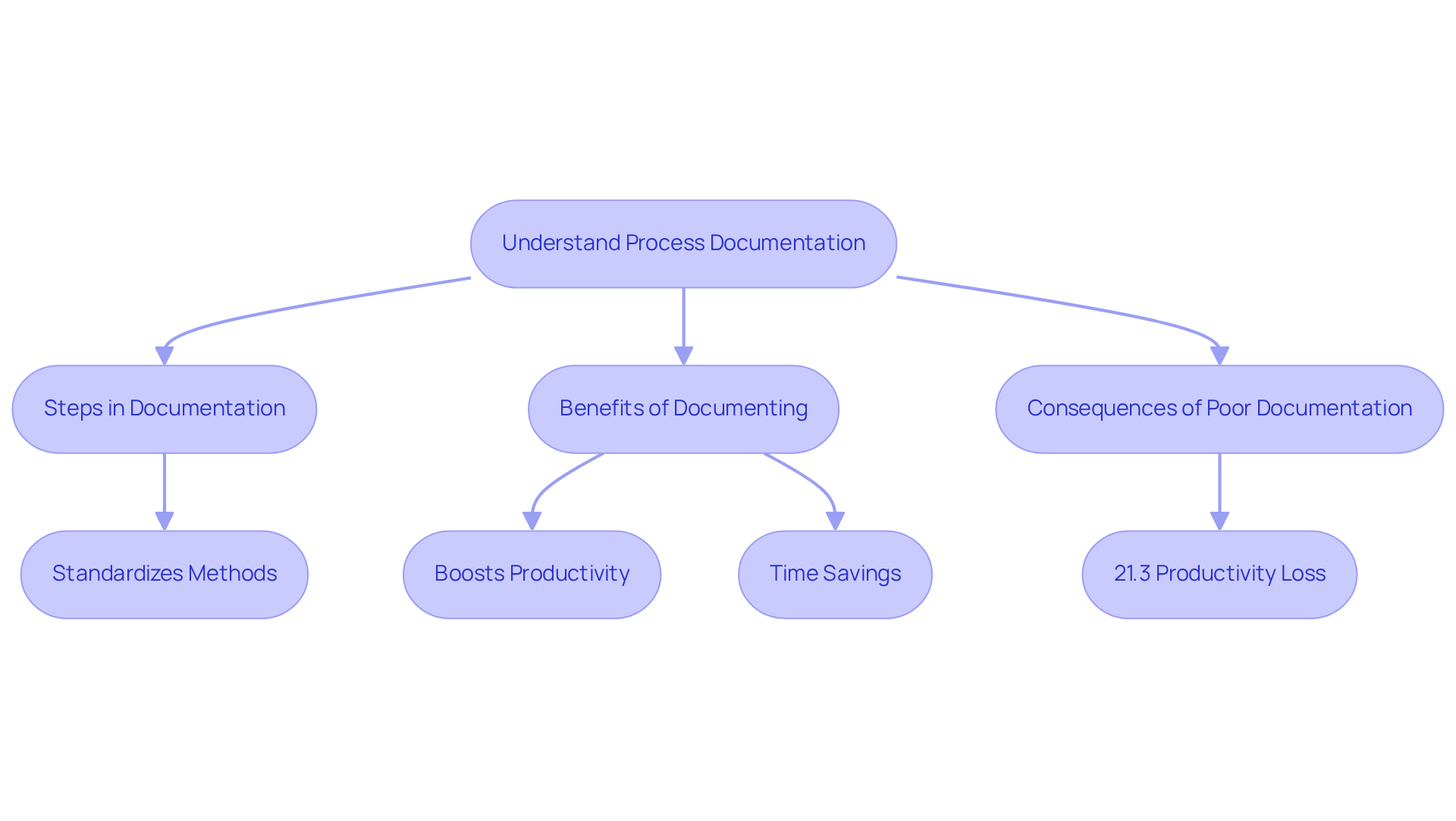
Define Scope and Gather Information
You might be wondering how to effectively , right? Well, it all starts with . This means figuring out what the procedure will cover and what it won’t. It’s a good idea to chat with , especially those team members who are hands-on with the activity. Their insights can really help you .
So, consider or brainstorming sessions to dig deep into each phase of the procedure. Think about the inputs, outputs, and any you'll need. By recording all this information, you’ll to and that accurately represents the procedure. Now, let’s dive into how to make this process even smoother!
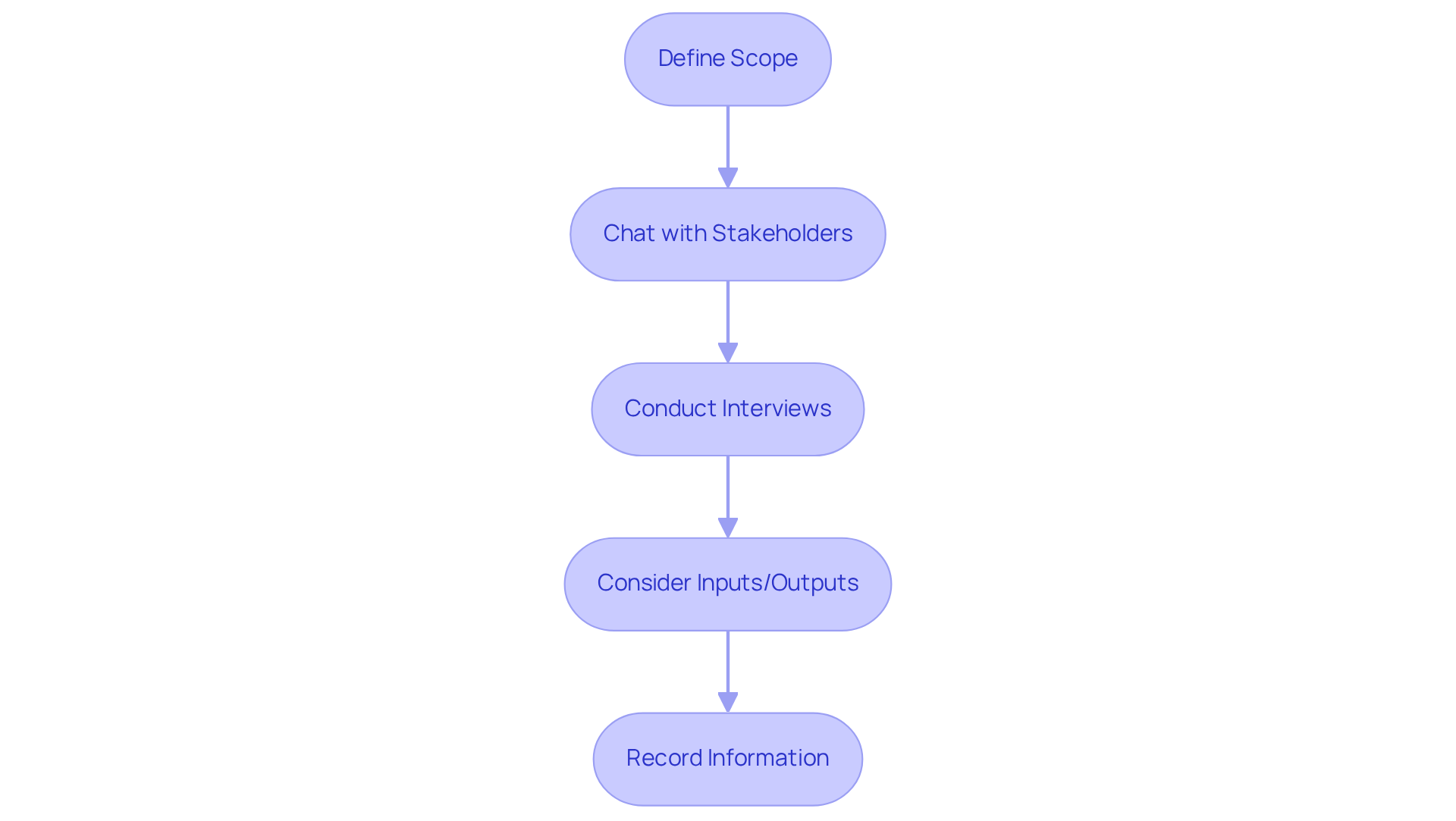
Create a Structured Document
So, you've gathered all the essential info—what's next? It's time to whip up a ! Start by sketching out the sections of your document. Typically, you'll want an introduction, purpose, scope, and a rundown of the steps involved. Keep things organized with . And hey, don't forget about visuals! Flowcharts or diagrams can really help illustrate complex steps, making it easier for everyone to grasp the information and remember it later. Research even shows that practicing instead of just reading can double how much we retain over time, so incorporating is a must.
Now, as you lay out each step, make sure you articulate them clearly. Using bullet points or numbered lists can really and make for quick reference. This organized approach not only helps everyone understand better but also serves as a handy guide for your team, keeping everyone aligned on objectives and cutting down on those lengthy meetings by providing upfront.
But here’s a little tip: steer clear of excessive detail in your records. Overly complex guides can actually stifle agility and innovation. To make your even smoother, consider tools like . It can help you capture and share workflows efficiently, making your life a whole lot easier!
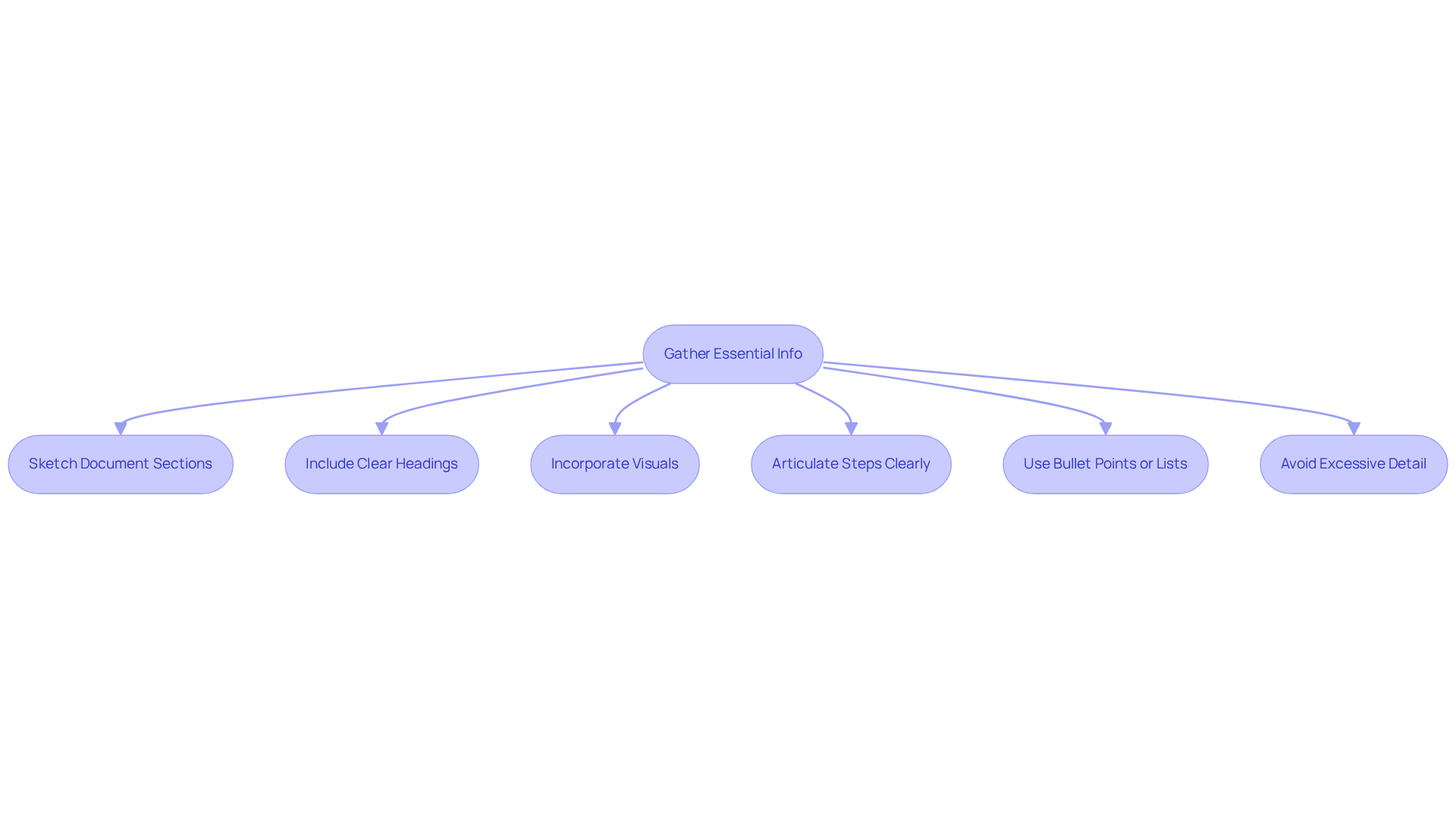
Review and Test Procedures
Once you’ve got that organized text ready, it’s time to roll up your sleeves and review the . You might be wondering, how can I make this better? Distributing the document among stakeholders and team members is a fantastic way to invite valuable feedback. They can help pinpoint any unclear steps or missing info that you might have overlooked.
Now, let’s dive into the importance of a . Actually putting the to the test shows just how effectively they can be implemented. Watching it in action? That’s where the magic happens! You’ll start to recognize any inefficiencies and areas that could use a little enhancement. Industry specialists agree: not only improves your records but also ensures they accurately reflect operational realities. This ultimately of your document procedures.
Speaking of tools, have you checked out ? It can really simplify this task, making it easier to efficiently. But hold on—be aware of like resistance to change or miscommunication among team members. These can really throw a wrench in the review process. Once you’ve enhanced the records based on input, the next step is to make sure everyone is trained on the . This way, you’re all set for smooth implementation!
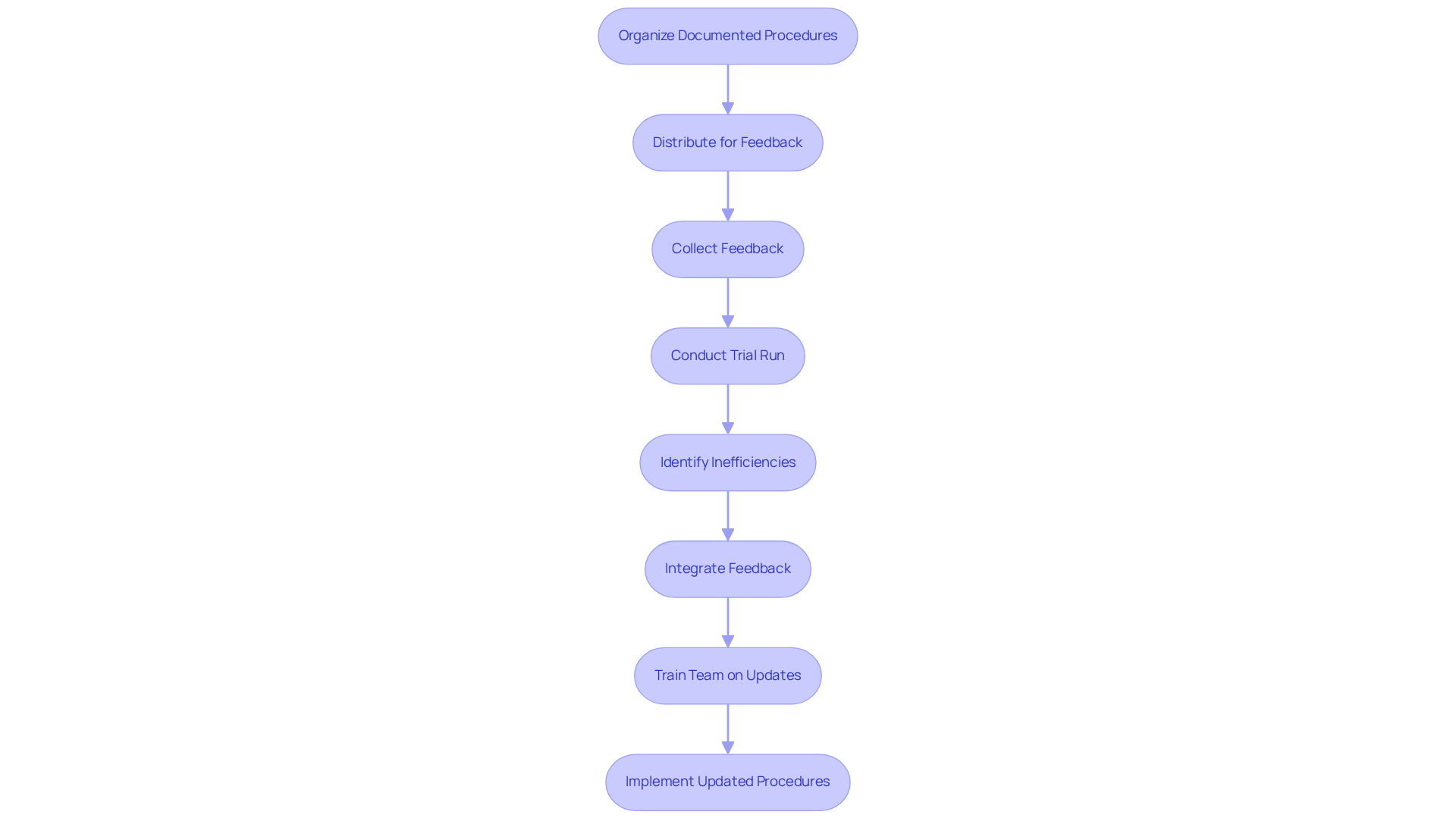
Maintain and Update Documentation
You might be wondering how to to keep your documentation effective over time. Well, it is key to establish a routine that will ! Consider establishing regular assessments to and relevance of your materials—especially after any significant changes in processes or team structures. For example, a healthcare organization noticed that their 'Infection Control Procedures' guideline had to be updated frequently due to new research and regulatory shifts. This really shows how important it is to .
Encouraging team members to share their insights from personal experiences can also shed light on areas that need improvement. And let’s not forget about ! It’s super important because it helps you track changes and updates, ensuring everyone has access to the latest information. As Hana Trokic puts it, "A is crucial for maintaining , preventing data loss, and facilitating collaboration among team members." A tech company, for instance, found great success in using version control to manage outdated software manuals, which really boosted user experience.
By making these maintenance practices a priority, you can not only but also improve operational outcomes overall. So, what do you think? Ready to dive in and make your documentation work for you?
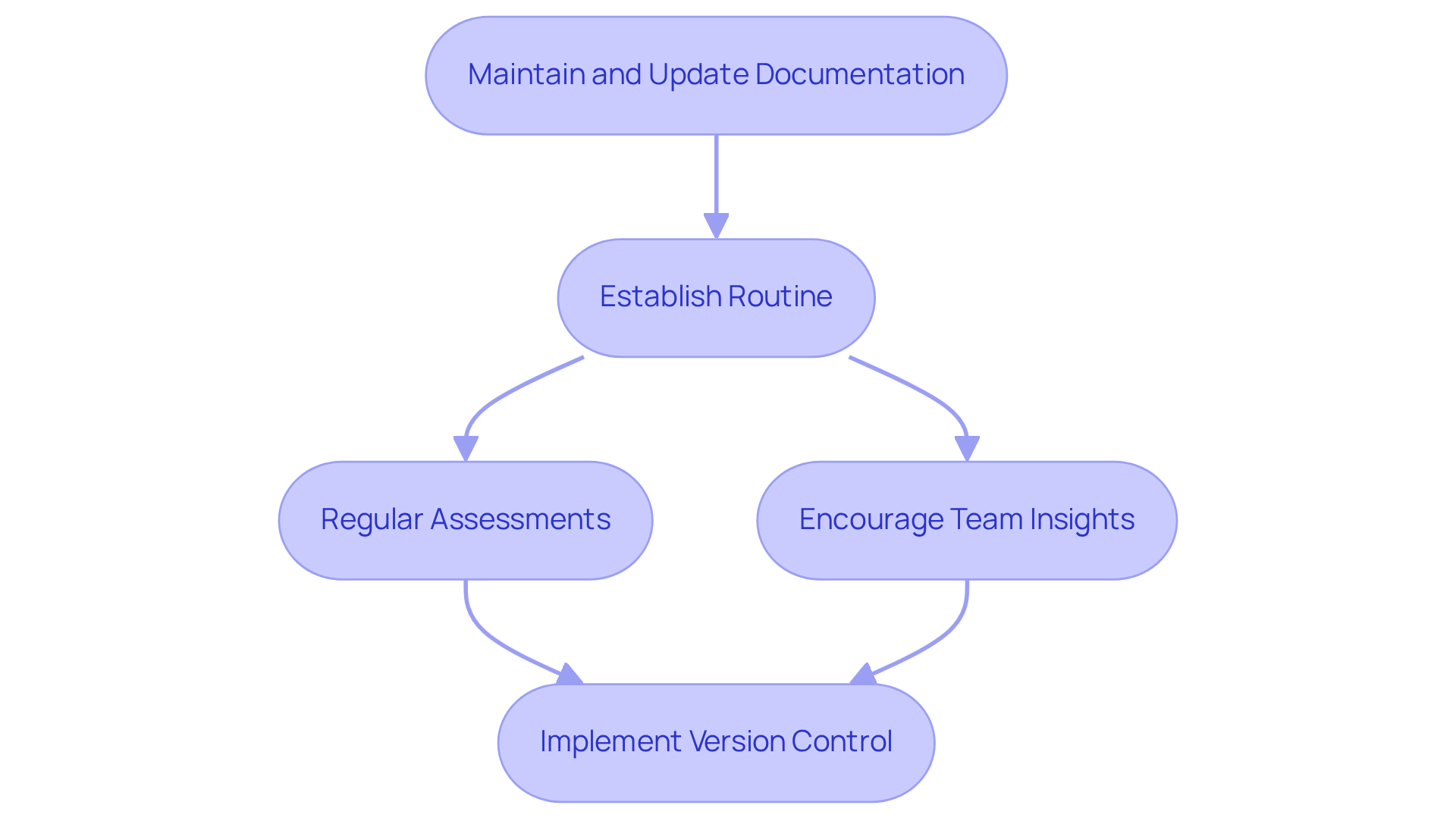
Conclusion
You might be wondering why effectively documenting procedures is such a big deal. Well, it’s essential! Not only does it standardize workflows, but it also boosts organizational efficiency and helps retain knowledge. When teams capture detailed steps and insights, they can minimize errors and foster a culture of continuous improvement. This structured approach to documentation empowers employees, encourages collaboration, and ultimately drives productivity across the board.
Now, let’s dive into the five-step process for documenting procedures:
- Understanding process documentation.
- Define the scope and gather information.
- Create a structured document.
- Review and test those procedures.
- Maintain and update your documentation!
Each step highlights the importance of clarity, organization, and regular assessments to keep everything relevant and effective. Engaging stakeholders throughout this journey and using tools for feedback and version control are key to ongoing success.
In light of all this, it’s clear that adopting best practices for documenting procedures isn’t just another task on your to-do list; it’s a strategic initiative that can really transform your organization’s operations. By prioritizing effective documentation, teams can cut down on inefficiencies, support sustainability efforts, and ultimately achieve greater success. Embracing these practices will lead to a more robust and agile organization, ready to adapt to changes and challenges in today’s ever-evolving business landscape.
Frequently Asked Questions
What are process records?
Process records involve capturing and detailing the steps needed to execute specific tasks or workflows within an organization, serving as a manual that guides users through each stage of a procedure from start to finish.
Why are process records important?
They standardize methods, preserve essential knowledge, reduce mistakes, promote uniformity and transparency, boost productivity, and help train new staff effectively.
How much time can organized record-keeping save organizations?
Organizations that embrace organized record-keeping can save up to 80% of the time usually spent on manual file sharing.
What do team members believe would enhance productivity?
A study found that 70% of team members believe fewer meetings and emails would enhance productivity.
What are the consequences of poor record-keeping practices?
Poor record-keeping can cause a 21.3% productivity loss and negatively impact team efficiency and collaboration.
How can effective documentation support sustainability efforts?
Moving towards effective documentation can help reduce environmental impacts associated with inefficient documentation practices.
What is the first step in effectively recording a procedure?
The first step is defining the scope of the procedure, determining what it will cover and what it won’t.
How can stakeholders contribute to the documentation process?
Engaging with stakeholders, especially team members who are hands-on with the activity, can provide valuable insights and different viewpoints that enhance the documentation.
What methods can be used to gather information for documenting procedures?
Conducting interviews or brainstorming sessions can help gather detailed information about each phase of the procedure, including inputs, outputs, and necessary tools or resources.
👍
What others are liking
5 Steps to outline your ideal documentation structure
5 MINS READ
Where to start the your journey of mapping out your ideal documentation structure, aligning it with the very heartbeat of your organization?
Defining a winning level of detail in your process
3 MINS READ
What is too much detail, and what is too little? This article described in that winning level detail about what detail is enough.


